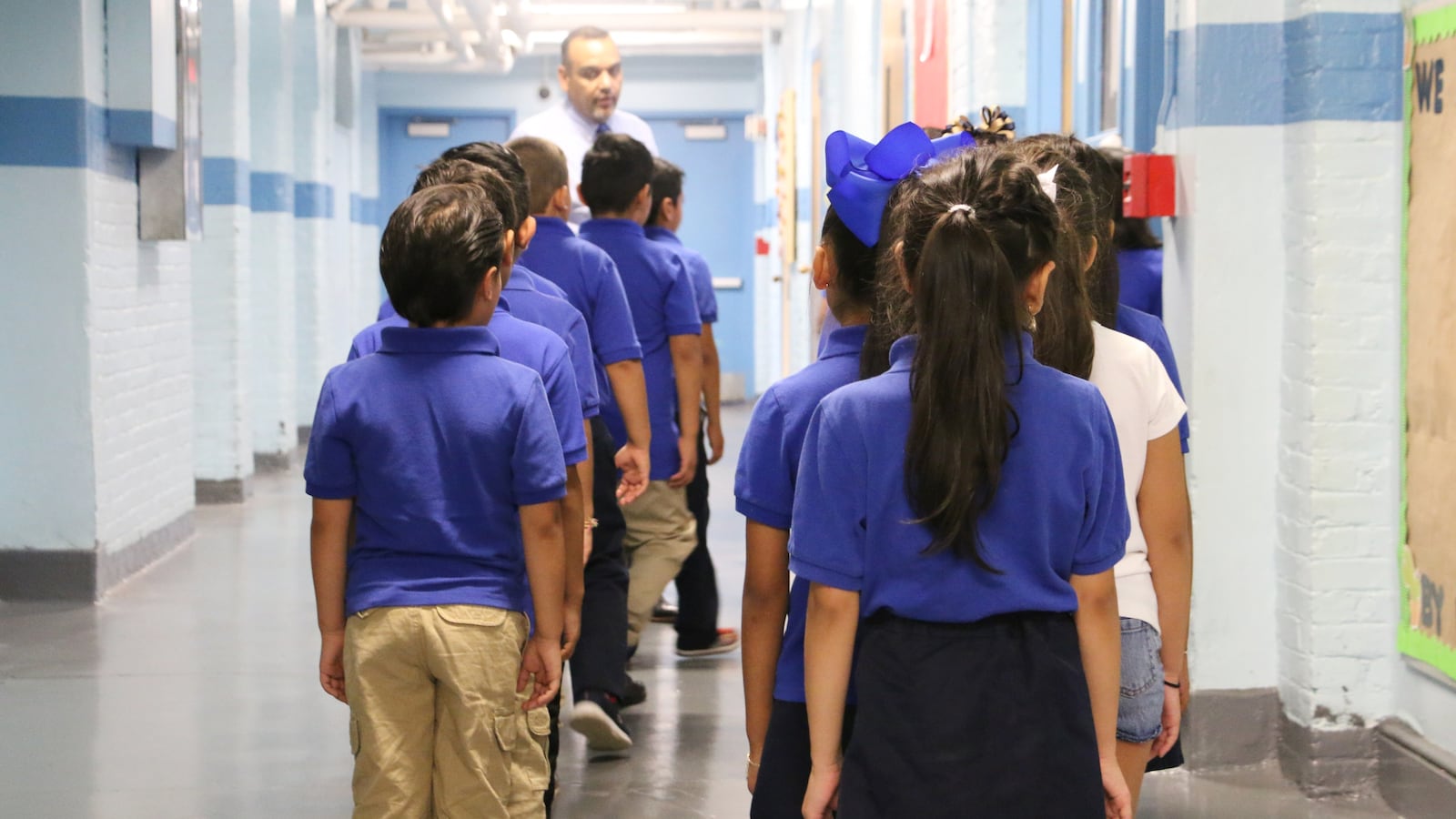For the first time, Newark students who are still learning English will gain an edge when they apply to schools this year — part of the district’s ongoing effort to ensure that all schools serve their fair share of high-needs students.
The city’s computerized enrollment system, which allows families to apply to most traditional and charter schools using an online portal, has for years given a preference to low-income students and those with disabilities. But it has not previously done that for English learners, even though they are more segregated than those other groups.
Now, students who are eligible for bilingual programs will get a leg up when they apply to schools where they are underrepresented in the applicant pool. The change goes in effect when admissions begin on Monday and continue through Feb. 15.
As of Friday, the district had not announced the change publicly. It also had not posted an updated version of the guidebook that families use to choose schools.
It is one of several tweaks to the enrollment system, called “Newark Enrolls,” that were written into an agreement between the district and participating charter schools that the Newark school board quietly approved this month. Charter school boards were expected to vote on the agreement throughout the month.
Chalkbeat obtained a copy of the document, which is posted below, through a public-records request.
In Newark, families can apply to any school in the city — not just the one closest to their home, as is the case in many districts. That “choice” system makes it imperative for families to have accurate, up-to-date information about their school options and the enrollment process in order to make informed decisions.
Through Newark Enrolls, families can apply to up to eight schools online or at the district’s enrollment center. A computer program then matches students to schools. (Each year, a handful of charter schools decline to participate in the system, leaving families to apply to those schools separately.)
When more students apply to a school than it has space for, the matching system gives preference to certain students. They include students who have siblings in the school, live near the school, or are considered “high need” because they have disabilities or qualify for free lunch. Under the new rules, students who are eligible for bilingual programs are included in that category.
In most cases, the high-need preference works by comparing a school’s applicants for a particular grade to students across the city. If the share of high-need students in the school’s applicant pool is smaller than the citywide average for that grade, then those students get a boost. For example, if 5 percent of applicants to a school’s ninth-grade class have disabilities compared to 15 percent of ninth-graders citywide, then applicants with disabilities would have a better chance of getting in than those without, according to the enrollment document.
The agreement says the district will use a new screening process to determine the English proficiency of students who are not native English speakers. The process will include an English test and a survey that asks students what language they speak at home.
It is not clear if the district has already conducted the screening process. A spokeswoman did not immediately respond to a request for information Friday.
The enrollment change is meant to reduce the concentration of English learners in a subset of schools. But it will be limited by where families choose to apply and which schools offer bilingual programs.
Last year, fewer than half of district schools offered bilingual programs, according to the enrollment guide. Most are located in the East and North wards, where many families speak Spanish or Portuguese. None of the city’s highly coveted magnet high schools have bilingual programs, the guidebook shows.
Not surprisingly, students with limited English proficiency were clustered at schools with bilingual programs. For instance, last year, 55 percent of students were English learners at Barringer Academy of S.T.E.A.M. (now part of Barringer High School), which offered a Spanish bilingual program. By contrast, Science Park High School, a magnet school without a listed bilingual program, had no English learners.
Below is the full agreement between the district and charter schools participating in Newark Enrolls. A description of the new rules for English learners begins on page 4.

